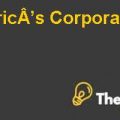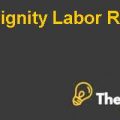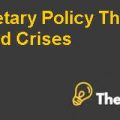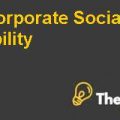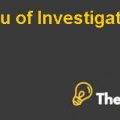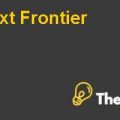
Part 1
CASE JAGUAR PLC 1984
Q1.) Consider the macroeconomic information about current interest rates, exchange rates and expected inflation rates presented in the case.
- Discuss whether this information is consistent with an equilibrium view of market (the parity conditions without any risk premia). If not describe the nature of the out-of-equilibrium situation and some external observable economic imbalances or conditions that would be consistent with any out-of-equilibrium situation you describe.
Answer 01 (a)
A market will be in equilibrium if the exchange rate movements are consistent or in parity relation with the movement in interest and inflation rates, moreover, the parity relation to work effectively there needs to some conditions that must be met for the parity relationship to be true and these conditions include free trade of good between the two countries, same goods for calculation of price index and same year data. However, the analysis of information provided in case are not linked in a parity relation as the exchange rates are not moving with the parity relation to interest rates or inflation rates between the United Sate and United Kingdom. For instance, the interest parity states that if exchange rates and interest rates are moving with a parity relation than using the interest rates between U.S. and U.K. as at June 29 1984, will give a foreign exchange rate of $1.464 per pound, however, the exchange rate given in the case at same date is $1.36 per pound.
- Taking the end of June 1984 exchange rate as given (USD1.35/GBP), generate forecasts of USD/GBP exchange rates on an annual basis for June 1985 – June 1989 using:
i. Relative PPP based upon the annual expected inflations suggested by the case below.
ii. IRP based upon the annualized LT government bond interest rates given in the case (exhibit 8).
iii. APPP convergence where the forecasted rates change in a straight line fashion from the June 1984 rate of 1.35 to the estimated equilibrium rate in June 1989 using APPP (CPI) with a June 1973 baseline (forecast the APPP (CPI) equilibrium rate for June 1989 and move to it from 1.35 using straight line. Note you can use data from PS#1 for this analysis.)
Answer 01 (b)
Please refer to Exhibit-A of Excel spreadsheet.
- Using each set of XR forecasts, determine an estimate of Jaguar’s value in GBP as of the beginning of 1984 based upon the PV of its future expected free cash flows. Based upon the three values, identify which valuation you would recommend to your clients and explain why.
Answer 01 (c)
Based on the calculation as per Exhibit-B, C and D of the spreadsheet for the valuation of Jaguar in GBP which uses three different foreign exchange rates forecast, it can be concluded that Jaguar’s value of £588 million which has been reached using the foreign exchange rates forecast based on APPP (CPI) parity will be the highest value in terms of present value of free cash flows.
I would recommend the Jaguar value which has been calculated using the using the interest rate parity (IRP) based foreign exchange rates, which is £201 million, I would recommend this valuation because the interest rates are set by the government and if they are not set with a view of market equilibrium then any one can get the benefit through earning excess interest earnings from a foreign country, therefore, interest rates are thought to be more realistic measure of future exchange rates.
Q2.) Given your three estimates for the GBP value of Jaguar as of January 1, 1984, do the following:
- Calculate the delta of Jaguar’s value to a shock to each of the three exchange rate forecasts.
Answer 02 (a)
Delta values for each exchange rates forecast has been calculated in Exhibit-A, B and C and these Delta values are 3.93, 8.71 and 3.62 times in case of exchange rates forecasts based on purchasing power parity (PPP), interest rate parity (IRP) and absolute purchasing power parity (APPP) respectively.
- Using non technical financial language (i.e., revenues, costs, profits, etc.), provide an economic rationale and conceptual interpretation for the magnitude of these three deltas to your client.
Answer 02 (b)
In terms of economic rationale, deltas will affect the competitive position of Jaguar in the U.S., where in case of appreciation of pounds over the U.S.D. will make the car exports to U.S. expensive for Jaguar, consequently, it will create a gap for the entry of other competitors in U.S. car market which have a depreciation currency in comparison to U.S.D. Moreover, the cost of imported raw materials will also be affected through an appreciation of pound.
- Given these estimates of delta, determine the exposure in USD terms of the value of Jaguar to its owners as of January 1, 1984, given each of the three XR scenarios.
Answer 02 (c)
Delta values will expose the Jaguar value USD193.62 million, USD33.32 and USD234.66 based on the PPP, IRP and APPP exchange rates respectively. Detailed calculations are in Exhibit-B, C and .........................................
This is just a sample partial case solution. Please place the order on the website to order your own originally done case solution.
Tools for analyzing the impact of operating cash flows to exchange rate changes. Considers cost Jaguar PLC during its privatization and public offering in 1984. Jaguar is the largest exporter from the United Kingdom and the United States, therefore, subject to changes in the dollar / sterling exchange rate. Students were asked to rate the value of the company, depending on the expected future exchange rate. Students may also be asked whether and how the impact of Jaguar should be insured. "Hide
by Timothy A. Luehrman, William T. Schiano Source: Harvard Business School 13 pages. Publication Date: 05 Oct 1989. Prod. #: 290005-PDF-ENG


